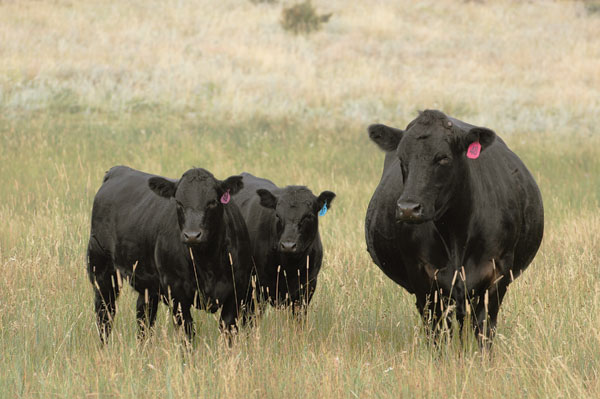The fallout from the DNA revolution
Is the DNA revolution pushing change faster than we can deal with it?

There has been a tremendous amount of discussion about the impact of the DNA revolution, but initially, that discussion centered on the purebred industry. And that makes sense, as the new tools have shifted the playing field and will create a whole new set of winners and losers. Business models in the seedstock industry are changing.
While the impacts of the DNA revolution are felt primarily at the seedstock level, ultimately the impact will be felt by the commercial industry. Much like in the seedstock industry, improved genetic evaluation tools and increased rate of change does not necessarily correlate to an increase in progress or profitability.
I believe one of the greatest risks of the DNA revolution is that our thinking does not evolve as quickly as the technology. We are already seeing in the seedstock segment, as we bump up against environmental constraints, increases in growth potential are not being realized. The old mindset that more is always better within functional limitations may still be correct, but we are probably going to push the functional limitations from a genetic standpoint or from a phenotype, convenience trait, practicality standpoint as well.
Perhaps we just need an adjustment period, but we have a “more is better” mentality that is difficult to shake. I always enjoy talking to cattlemen about their parameters for the ideal EPD profile for their environment. Ironically, whether it be purebred or commercial and irrespective of what number we are discussing, they are focused on increasing that number.
Part of that desire to push traits forward is understandable. What is required to be competitive today and what will be required to be profitable in a couple of years are never the same. Part of the reason we utilize the national genetic evaluation programs is that it allows us to identify genetic outliers and defy genetic antagonisms. We can keep calving ease and decrease mature size while simultaneously increasing growth and carcass merit, for example.
Twenty years ago, we were focused on the Choice-Select spread and bragging about pens of cattle that went 80% Choice. Today, the Choice-Select spread is largely irrelevant, and for any progressive cattleman, 80% Choice is commonplace and may even be considered a defeat and not a victory. While the mark today is still 80%, the goal now is 80% in the upper two-thirds of Choice.
Similarly, we used to figure breakevens with steers at 1,250 pounds and heifers somewhere above 1,100. Not only does nobody use those numbers today when figuring breakevens, a pen of steers that actually are compositionally correct at 1,200 pounds are simply not viable today. The same can be said for conversion rates, average daily gains, you name it. What was out of this world 20 years ago is now below industry standards. What is optimum today will not be optimum a year or two from now.
History has a way of repeating itself. The pendulum tends to swing from one extreme to another, but we keep moving the bell curve in the right direction. The DNA revolution, though, is going to make it easier to push the extremes more than ever before, and that correlates to wrecks and drastic corrections to rectify them. For example, the industry needed to, had to, increase growth in the 80s, but that drive also led to the frame 9 and 10 cattle that everyone now recognizes was a colossal mistake.
We must have more robust indexes that allow us to move forward without rewarding the extremes and the increased risk that goes with them. That’s what it will take in order for the DNA revolution to not result in an incoherent emphasis on maximization that pushes toward one-trait selection instead of a systems-thinking approach that recognizes the tradeoffs and unintended or correlated responses in other traits and economic drivers.
We can’t stop moving forward; the optimum bar is going to be moving forward at an unprecedented rate. Yet, we can’t afford the disasters that come from crossing over the lines; 1,600 pound cows, 1,200 pound carcasses, milk production in beef cows that approach the dairy business, or hard-doing, poor-structured, wild cattle will upset the desired balance just as much as insufficient growth, efficiency or even mediocrity.
Maintaining the status quo will be more disastrous than ever. Average will become far below average quicker than it ever has. Conversely, we can blow the system up quicker than we ever have.
Academia has always told us to utilize crossbreeding, to utilize maternal and terminal lines, etc. But one could always overcome those advantages through simple, balanced-trait genetic selection. Those dynamics do not change, but as terminal and maternal lines diverge, and as it becomes more and more possible to select a wide array of genetic profiles across breeds, we may actually see the use of crossbreeding and selecting maternal and terminal lines become less complicated than the balanced trait approach.
There’s no doubt in my mind that without more robust and dynamic indexes that take a systems approach to beef production and profitability, we are going to see an increased emphasis on extremes. We have the data and the computing power to avoid that, we just need good systems analysis combined with strong genetic and economic factors.
It could be argued that the industry has always been one great experimental model, and over time the seedstock and commercial industries probably have done a pretty good job of finding the optimum combination of traits in an ever-changing environment. We will always need dynamic feedback and correction loops, but the key is to avoid the extremes and pain that has come with the process.
The opinions of Troy Marshall are not necessarily those of beefmagazine.com and Farm Progress.
About the Author(s)
You May Also Like




.png?width=300&auto=webp&quality=80&disable=upscale)
